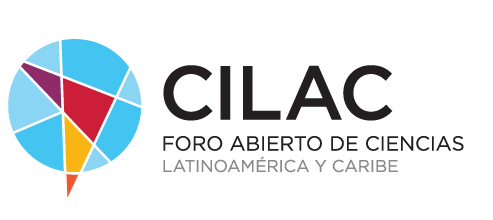Algunos elementos genéticos recién identificados les ayudan a reemplazar la cola y otras partes del cuerpo suprimidas.
Tres matemáticos han resuelto una cuestión fundamental sobre caminos rectos en el sólido platónico de doce caras.
El físico alemán supo predecir la existencia de ondas gravitacionales, pero erró al pensar que nunca se detectarían

The great popularizer of science, and professor of Biochemistry and Molecular Biology at the University of Murcia, already warns us, José Manuel López Nicolás in the prologue of The crooked lines of science: We are facing a work whose main message is that science, science in capital letters, thrives mostly in the heat of multidisciplinarity and interdisciplinarity.
Or as the entomologist put it Edward Wilson, by means of the consilience, that is, the hybridization of disciplines, and also of approaches and thoughts, and above all with the ability to jump the invisible wall between letters and sciences to become alphanumeric. As is the author of the book that is the subject of this review: the prolific, multitasking and talkative Eugenio M. Fernández Aguilar.
Teamwork and basic science
An individual cannot know everything about everything. The best you can hope for is to have an open mind and not stumble into the presumption that your small pocket of knowledge is the most relevant.
For that reason, science does not depend on scientists, fortunately. It depends on collaboration between scientists that, every time they present a new idea, it must overcome the demands of the scientific method and publication in a peer-reviewed journal, that is, the kind of external auditor to the mind of the fallible human being that hides behind the scientist.

The crooked lines of science: From antimatter to modern medicine
The key that Eugenio emphasizes in his book, which he considers to be the backbone of the progress of science, is that scientists must work as a team, as well as that research in basic science It is essential as mortar to build what comes next.
To demonstrate this, he weaves ten stories with great alphanumeric skill and concludes with a glorious treatment, almost as a corollary, of how the story was conceived. positron emission tomography (PET) and how many ideas and developments from adjacent disciplines allowed its existence, just as it happens with other artifacts, like the smartphone.
Eugenio is a prolific author, which is not at odds with the brilliance of each of his works, which is a unique pearl. In fact, I am beginning to have the feeling that, progressively, book by book, it is acquiring an increasingly personal, more interesting voice, and a narration cadence as well as an ability to amaze the reader by connecting everything with everything that I am convinced that will end up converting you in one of the main references of Spanish scientific dissemination. If it isn't already. What are you waiting for to check it out?

From an epistemological point of view, one of the most important advances is the fusion of laws, principles, theories, etc. As humans have discovered facts and regularities in nature, all kinds of efforts have been made to bring together apparently unconnected theories. Today's world is radically different from that of a century and a half ago thanks to the discovery that electricity and magnetism are two sides of the same reality. And this was possible thanks to the relationships between scientists from different countries, travel and the flow of knowledge, despite the fact that history also includes hatred, envy and pettiness.
–
The news
Books that inspire us: 'The crooked lines of science' by Eugenio M. Fernández Aguilar
was originally published in
Xataka Science
by
Sergio Parra
.

Corpses change soil nutrient concentrations and how those changes manifest in nearby plants. The most obvious result would be a large release of nitrogen into the soil..
Depending on how quickly plants respond to the influx of nitrogen, it can cause changes in leaf color and reflectance, and forensic botanists at the University of Tennessee, in a new investigation, they want to determine how these minimal clues can help us find hidden corpses to collaborate in police work.
corpse island
In any terrain or environment, the area immediately surrounding human beings, It is called "corpse decomposition island". While the impact of human decomposition on plants has yet to be fully explored, researchers outline prescriptive steps to make body recovery using vegetation a reality.

Research on the relationship between plants and human decomposition will be conducted at the University of Tennessee's "body farm." As explained by the main author Neal Stewart Jr., professor of plant sciences at the University of Tennessee:
In smaller open landscapes, foot patrols could be effective in finding someone missing, but in more forested or treacherous parts of the world like the Amazon, that won't be possible at all. This led us to consider plants as indicators of human decomposition, which could lead to faster and possibly safer bodily recovery.
It's true that other large mammals can also die in places where people disappear, making it difficult to track down human corpses.
For that reason, it is important to find specific metabolites for degradation in humans. Given that humans typically eat non-wildlife diets, there may be specific metabolites, such as those from medications or food preservatives, that have specific influences on the appearance of plants. Everything is so that future chapters of CSI even more exciting and scientifically interesting.
–
The news
We can find hidden corpses by looking at the plants
was originally published in
Xataka Science
by
Sergio Parra
.

